Transcending Time



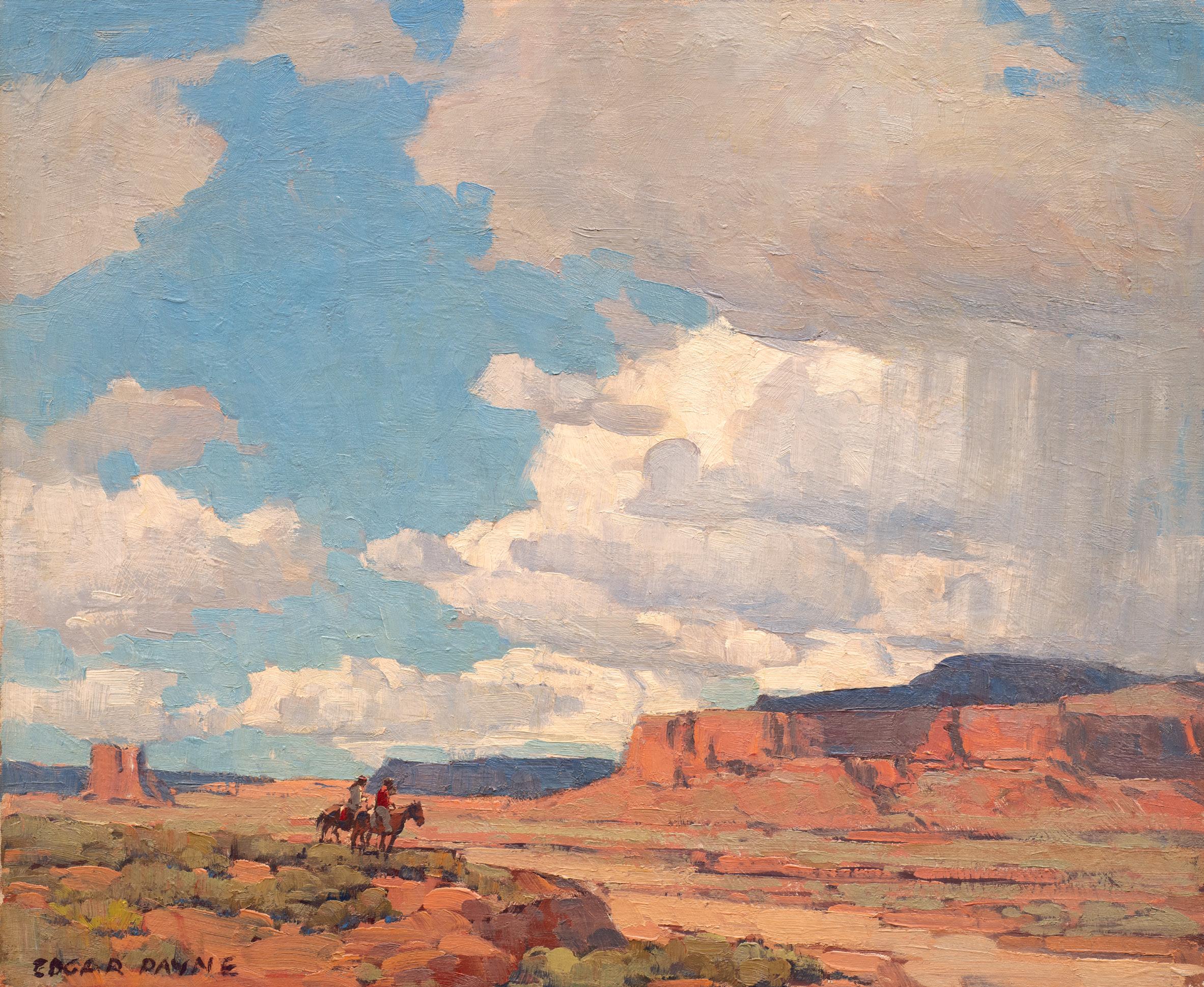
This year, as we selected the artwork to present in our summer 2023 catalogue, what quickly became apparent was the strong individuality of our featured artists. Each sought to capture a moment, a landscape, a culture in time. Moreover, while their images may fall into categories such as “Western” or “Southwestern,” the appeal of this artwork is much broader. Perhaps it is clichéd to refer to such artists as seminal, but over the years many have become just that. As such, the title Transcending Time seemed most fitting for this beautiful collection.
A case in point is our cover illustration, a work by Nicolai Fechin. His extraordinary rendering of the Taos Pueblo captures a lively moment at a place undeniably picturesque, but also historically significant. It is rare, one of the few examples of a Fechin Pueblo scene. As such the painting has been recently exhibited at the Taos Art Museum at Fechin House and Scottsdale’s Museum of the West.
It’s not often that we can offer a painting with single-family provenance, yet for this catalogue we are featuring several. The two brilliant desert redrock scenes by Edgar Payne came directly from the artist and descended through the family. Likewise, a quintessential 1906 Charles M. Russell painting –cowboys riding over a sage-covered plain – was also purchased from the artist and treasured by one family ever since.
Other significant works to highlight include three paintings by Frank Tenney Johnson. Two are nocturnes – nighttime scenes – an aesthetic scheme he explored frequently and made popular. We are also excited to include two watercolors of the Grand Canyon by Gunnar Widforss, a painter who has become more closely associated with this beautiful place than any
other artist. Devoting much of his career to the complexities of that monument of ancient rock, Widforss never tired of its challenges. Thomas Moran, who was the first to offer some of the most glorious western landscapes to the American public, had a faithful partner in printmaker Louis Prang. Recognized as a master, Prang achieved unrivaled heights with his chromolithographs of fifteen Moran watercolors, two of which we feature in these pages. Julian Scott, hired to create images of Native American life for the 1890 U.S. census, submitted a panorama of scenes including landscapes, village life, and portraits, ultimately solidifying a well-deserved reputation as an eloquent artist of Pueblo peoples.
We have always regarded Gustave Baumann and Edward S. Curtis as icons of their respective genres. For the catalogue, we’ve chosen five of Baumann’s masterfully rendered color woodblock prints and three of Curtis’ most memorable photographs, including “Cañon de Chelly” and “Before the Storm.”
Finally, we celebrate the works of several important artists who enriched New Mexico’s heritage: Victor Higgins, E. Martin Hennings, Joseph Fleck, Gene Kloss, Emil Bisttram, Blanche Chloe Grant, Maynard Dixon, and also Fremont Ellis – one of Santa Fe’s famed Los Cinco Pintores.
We appreciate your continued interest and hope you will enjoy viewing these works, which never cease to inspire us.
 Richard Lampert, July 2023
Richard Lampert, July 2023
Widely known as the “Cowboy Artist,” Charles Russell earned the name. At the age of sixteen, he moved to Montana to get a “western” education. He spent over a decade working as a cowboy, two years in a remote cabin with a mountain man, and several months living near the Blackfoot tribe in southern Alberta, Canada. Throughout it all, he was sketching, laying the groundwork for his development into one of the most recognized artists of western life. As a painter, sculptor, and storyteller, what he wanted most was to share his passion for those early days on the American frontier.
“Were painters of the American West ever to compete in a popularity contest, Charles M. Russell would win in a landslide. . . . Russell’s charisma was also founded in his rough and tumble experiences on the open cattle range of the Montana frontier in the 1880s; few of his artistic peers could boast of more exposure to the realities of cowboy life. His paintings and sculptures, all of them calculated to draw the viewer into the heart of the action, captivate artistic sophisticates and neophytes alike.”
– Joan Carpenter Troccoli, Painters and the American West


In 1876, the brilliant lithographer Louis Prang released a limited edition portfolio of chromolithographs of Moran’s western landscapes, entitled The Yellowstone National Park, and the Mountain Regions of Portions of Idaho, Nevada, Colorado and Utah , based on images from Moran’s trip with Hayden to the Yellowstone region.
“I received the copy of ‘The Yellowstone National Park’ which you so kindly sent me. It is in every respect a most sumptuous and magnificent work; and the faithfulness with which you have reproduced my water color drawings is beyond praise. It seems to me that ChromoLithography has, in your hands, attained perfection so skillfully have you produced every shade and tone of color in the originals. I naturally feel proud that a work so difficult and extensive should have been produced in America; I hope that your enterprise and skill will meet the appreciation it deserves. I am very truly yours, Thomas Moran.”
– Letter from Moran to Prang following the release of the portfolio
Norton Bush was a respected landscape artist, best known for his California scenes, as well as tropical landscapes of the Americas. Trained in the style of the Hudson River School, he made his painting debut in New York at the National Academy of Design at the age of seventeen. Influenced by Frederic Edwin Church, he determined to become a landscape painter. Before the age of twenty, Bush set out on a painting excursion that took him from New York to Central America via Cape Horn. For his return, he ventured up the West Coast and settled in San Francisco. Within the year he was exhibiting his new works. During his lifetime, he maintained studios in San Francisco and later in Sacramento, having honed his reputation as a highly skilled and popular California painter.



Julian Scott came to prominence as an artist in New York, acclaimed for his Civil War subjects and portraiture. Later in life, he developed an interest in Native American culture after being hired as a special agent for the 1890 U.S. census. Scott was recruited to assess conditions as well as to create images of the Native American subjects, including portraits and village scenes. In time he developed friendships and respectful relationships, prompting several subsequent trips to the American Southwest of his own accord. The region and its peoples had become a source of almost endless inspiration for the artist.
“Now, freshly returned from a private visit to Arizona Territory, he prepared to depict a vanishing culture from a perspective unseen beyond Hopi-land. . . . These impressions of Native American life formed a far different view from that to which the public was normally exposed.”
– Robert Titterton, Julian Scott: Artist of the Civil War and Native America
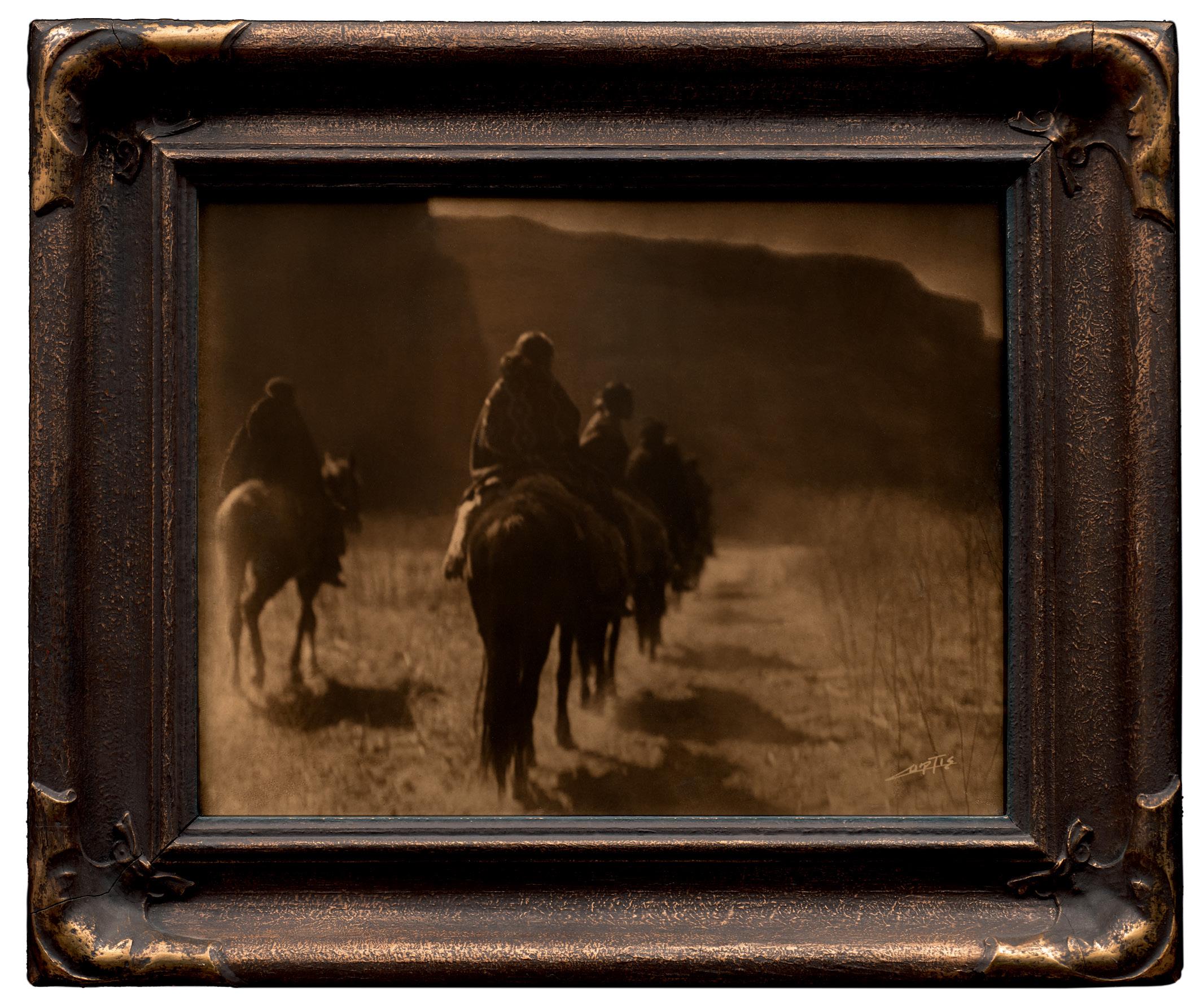
“
Though Curtis never made a dime producing what was arguably the most expansive and comprehensive publication undertaken by a single citizen of the United States, . . . he always believed his words and pictures would come to life long after he’d passed — the artist’s lasting reward of immortality. A young man with an unlived-in face found his calling in the faces of a continent’s forgotten people, and in so doing, he not only saw history, but made it.”
– Timothy Egan, Short Nights of the Shadow Catcher: The Epic Life and Immortal Photographs of Edward Curtis
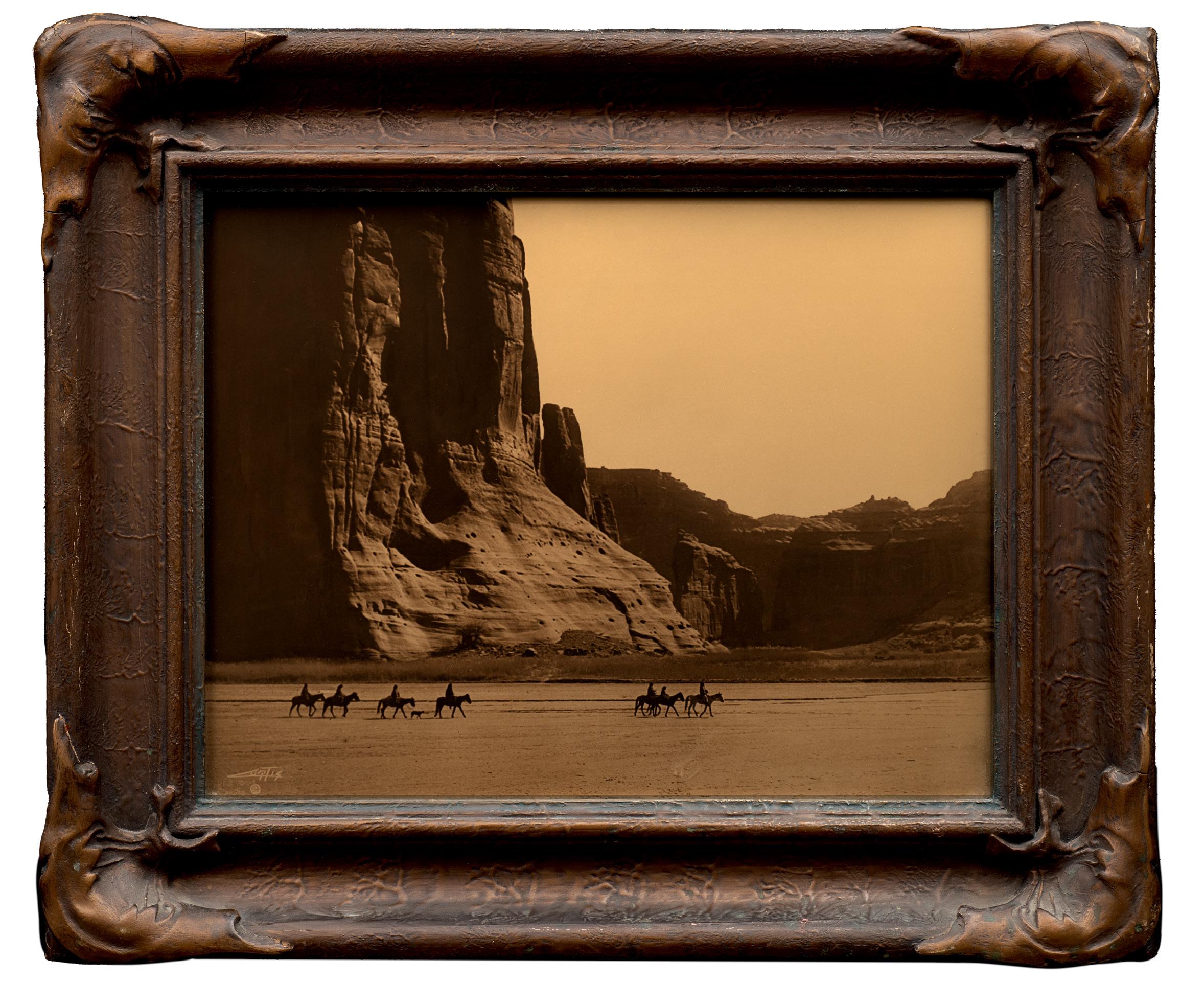
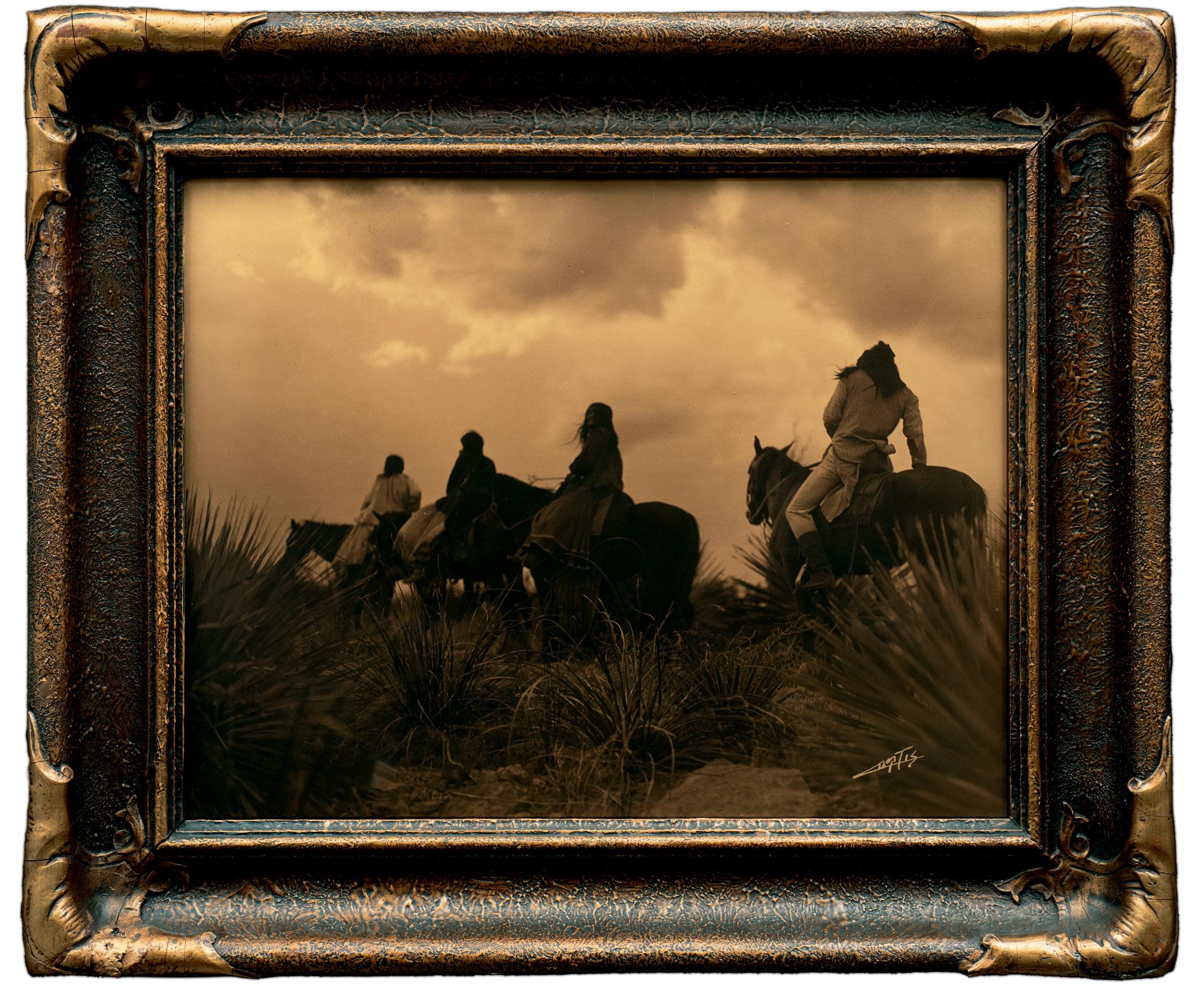

Born and raised in the Midwest, Frank Tenney Johnson began formal art training in Milwaukee, and later went to New York City, where his teachers included Robert Henri and William Merritt Chase. Starting his career in New York, he became successful as an illustrator for both magazines and books, alongside easel painting. However, at every opportunity, Johnson traveled to the American West, spending time with Charles Russell in Montana, working at a ranch in Colorado, and traversing the Southwest. By 1920, the success of his western canvases allowed him to focus exclusively on painting. He moved to Southern California using Los Angeles as a base for his studio, while operating galleries in Los Angeles; Cody, Wyoming; and New York.
“While Frank Tenney Johnson portrayed very much the same subjects as Remington and Russell, his purpose was to add a strong aesthetic beauty to the paintings he created, which carried his work considerably beyond that of the others.”
– Harold McCracken, The Frank Tenney Johnson Book


M“y object has always been to get as close to the real thing as possible—people, animals and country.
. . . The melodramatic Wild West idea is not for me the big possibility. The more lasting qualities are in the quiet and more broadly human aspects of Western life. I am to interpret from the most part the poetry and pathos of life of Western people seen amid the grandeur, sternness and loneliness of their country.”
– Maynard Dixon, as quoted in The Modern West: American Landscapes 1890-1950
“ V ibrant, energetic and committed to self-expression. These three descriptors serve to define an otherwise hard-to-categorize group of women who helped to shape Taos, New Mexico’s artistic legacy.”
– Suzan Campbell and Sandra D’Emilio, “Pioneering Spirits: Early Women Modernists in Taos,” Antiques & Fine Art


“His attraction to grand scale, or ‘bigness,’ and his devotion to ‘beauty,’ or what color and light can do to visually enhance mass, exposed his artistic strategy. His works were inspired by nature but ‘humanized in the studio.’”
– Peter Hassrick, “Edgar Payne: The Scenic Journey,” in Edgar Payne’s Southwest
“Widforss’ obscurity is a paradox, given the fact that he is one of the greatest artists to paint the West. The story of his life and work is one of great triumph in realistic painting. . . . His is a compelling story of a Swedish expatriate who fell in love with the American landscape and devoted the peak of his career to painting the dynamic interplay between landscapes and atmosphere. His contemplative visual poems of magnificent Western vistas are what remain.”
– Museum of Northern Arizona exhibit brochure, Gunnar Widforss—Painter of the National Parks
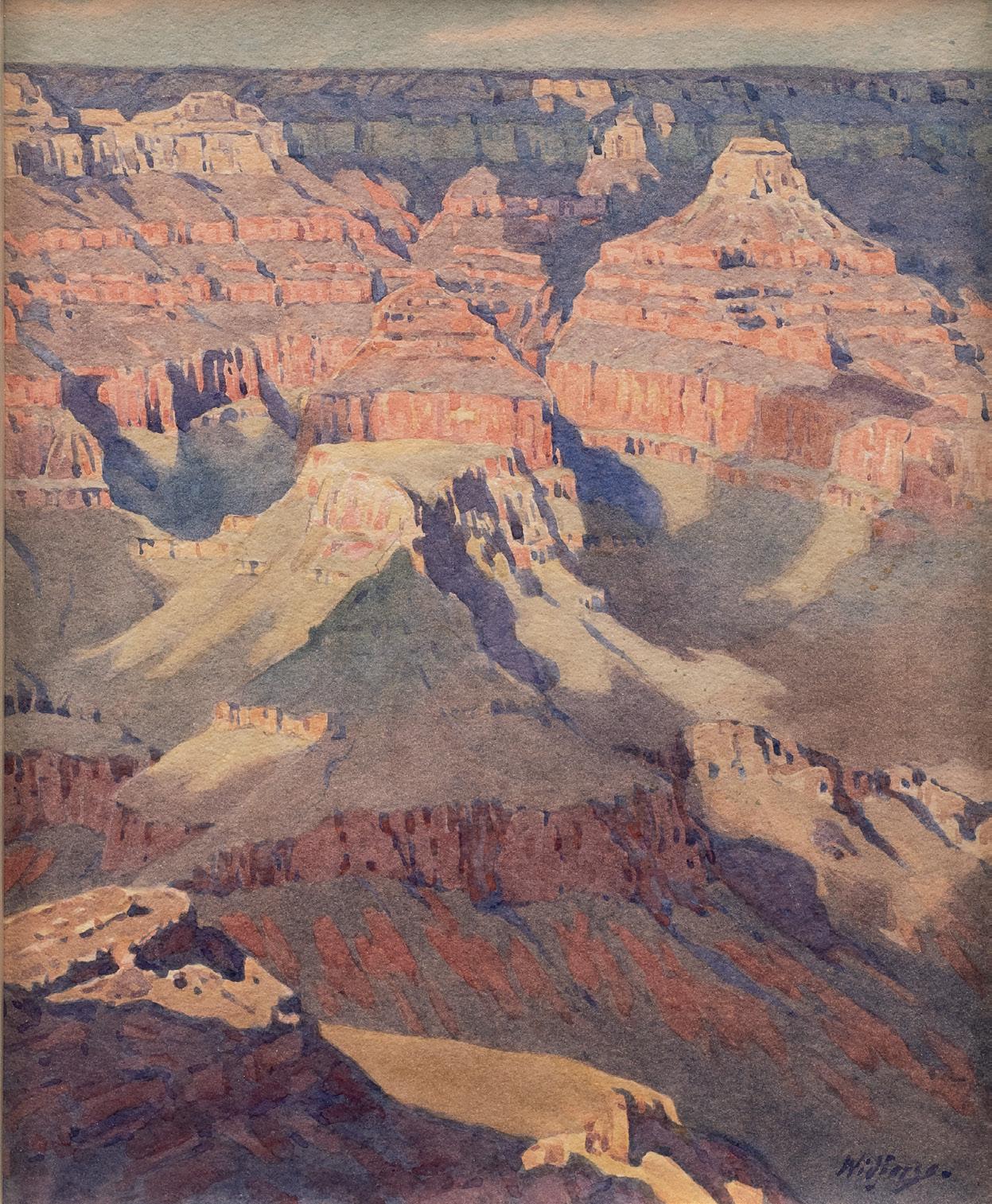

Raised in Kazan, Russia, Nicolai Fechin attended the Kazan Art School, and later the St. Petersburg Imperial Academy of Fine Arts as a student of Ilya Repin. Early exhibitions of his work attracted international attention. With the assistance of a patron in Pittsburgh, he and his family were allowed to immigrate to the U.S. In 1926, after Fechin was diagnosed with tuberculosis in New York, the family moved to Taos. There, Fechin not only recuperated but took to the rugged mountain locale, painting scenes of the region and its people in his inimitable, virtuosic hand.
“Most artists who came to Taos were Americans drawn by two subjects—the Pueblo Indians and the high desert landscape—that answered their need for distinctively national themes. Nicolai Fechin, by contrast, was won over not by the Americanness of the Southwest but by the similarity of New Mexico and its people to the topography and tribal cultures of his native Russia.”
– Joan Carpenter Troccoli, Painters and the American West
“H is great landscapes pay homage to the grandeur of the Taos mountains and to the dramatic moods of ever-changing skies, and he painted with devotion such lovely things as a circular track left by a wagon that has turned full ‘round in the fresh snow of early winter. Whether Higgins was painting white on white or opening his palette to the full spectrum of color he showed himself a master at transposing the overwhelming subjects of the Southwest into paintings of distinction.”
– Robert A. Ewing, Curator-in-Charge of Fine Arts, Museum of New Mexico: catalogue essay for Victor Higgins, 1884-1949: Retrospective Exhibition


Hennings enjoyed printmaking, and in particular, one-ofa-kind prints known as monotypes. For such a print, the artist applies oil paint or printer's ink using brushes, rollers, palette knife, perhaps even fingers or rags, to create an image directly onto a metal or glass plate. When the plate is run through a press, this one-of-a-kind image is transferred onto the paper.
Hennings “painted the men, women, and children of all three cultures of New Mexico, but the Indians of the Taos Pueblo were the heroic figures of his finest paintings. . . . figures of beauty, serenity, and majesty.”
–Patricia Janis Broder, Taos: A Painter’s Dream

Autumn Landscape c. 1940 Oil on canvas 25 x 30 inches Signed lower left
Musician c. 1932 Oil on canvas on Masonite 21 1/2 x 26 inches Signed lower left

ike the adopted Westerner he was, he stuck to his guns by distilling a number of influences into his unique vision of the American Southwest. Consequently, Joseph A. Fleck created a body of work that testifies to his distinctive place in the Taos art colony and American art in general.”
– Michael R. Grauer, A Fine Sense of Poetry: The Life and Art of Joseph Amadeus Fleck

“L ight changes so quickly it’s impossible to capture it by setting one’s easel up and painting directly from life. I strive to catch the mood of a certain place on a certain day by using my mind’s eye for the vision and my feelings for the mood after I am back in the studio.” As quoted by Ina Sizer Cassidy in “Art and Artists of New Mexico,” New Mexico Magazine
“In the final analysis, what gives to a work of art its distinction, are the ‘intangibles,’ the undefinable, the unexplainable qualities, that can only be sensed or felt.” As quoted in Works and Words of Santa Fe Artists



“
The great achievement of his career was that he was able to delight people by the melding of his craftsman’s skill with the sustained inspiration he drew from the beauty of nature, the venerable traditions of Native American culture, and a prevailing sense of good humor.”
– David Acton, Gustave Baumann: Nearer to Art
“Baumann was a delightmaker in the world of art, a thoughtful man with a sense of fun which often surfaced in the diverse works which flowed from his mind, his heart, and his extremely facile hands.”
– Calla Hay, “Gustave Baumann,” El Palacio





“She is an artist who can lift us above ourselves and carry us to a high, though perhaps a brief, relief. This is the truest function of art, to take us away and then bring us back to truth.”

– Mabel Dodge Luhan, Taos and its Artists

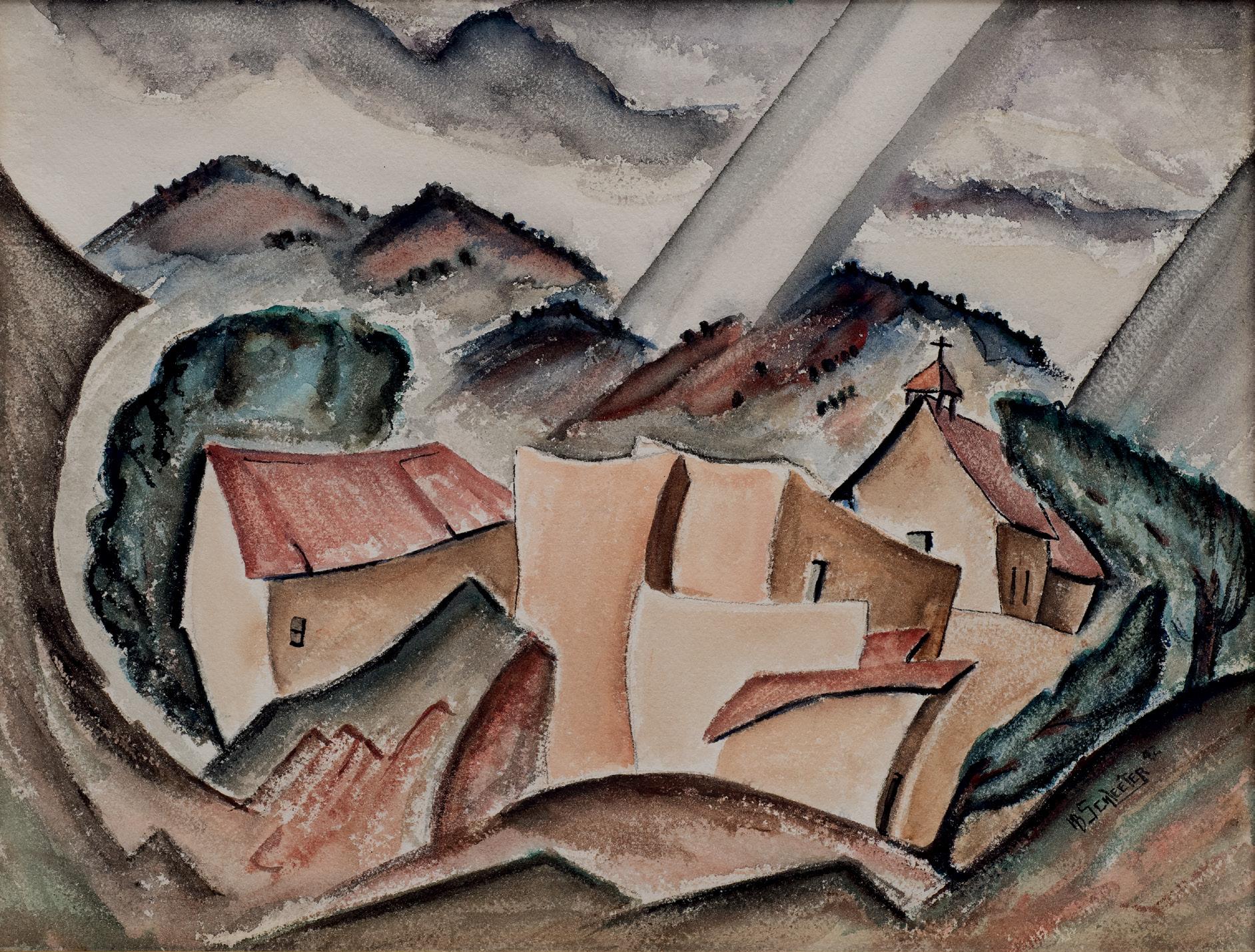
©2023
Designer Alex Hanna, Invisible City Designs
Writer Stacia Lewandowski
Photographer Jamie Hart
Color Separations
Andy Johnson, Underexposed Studios
